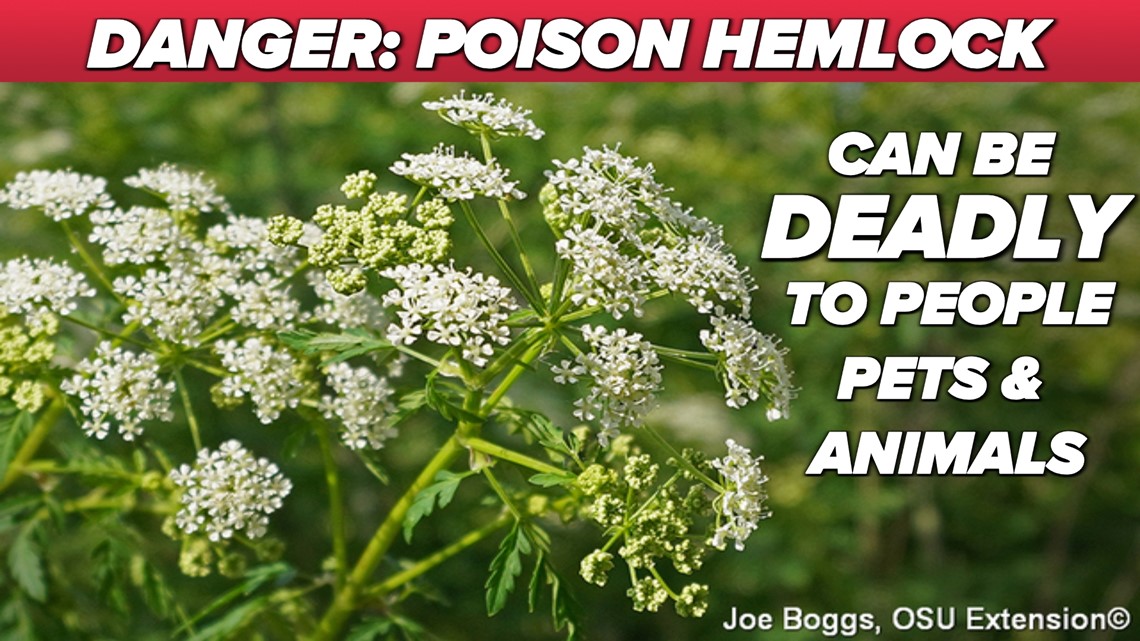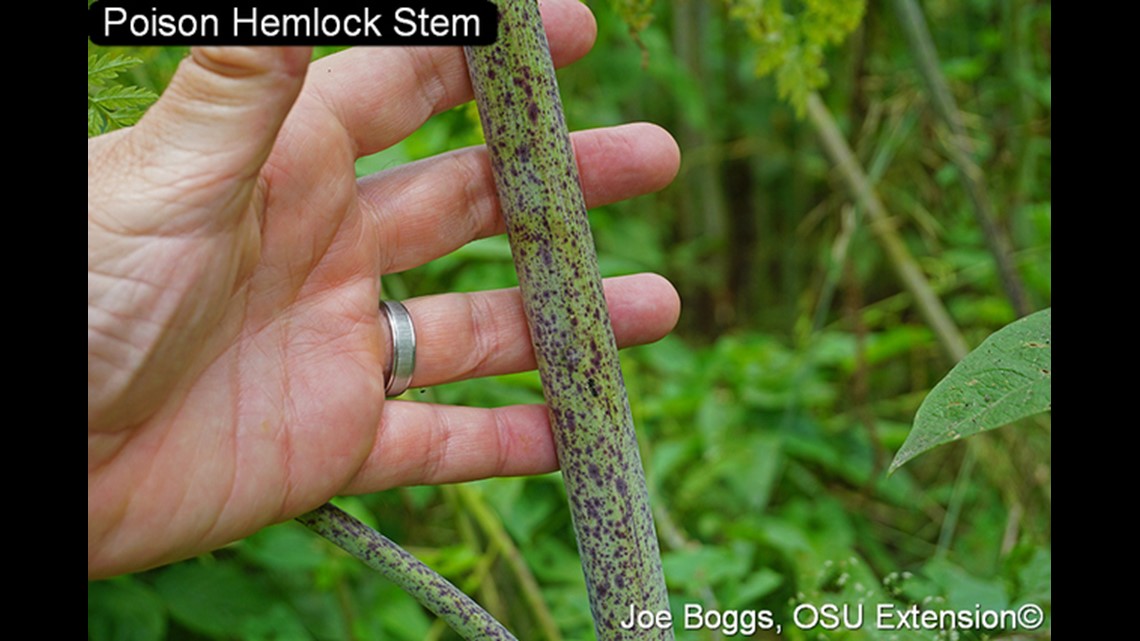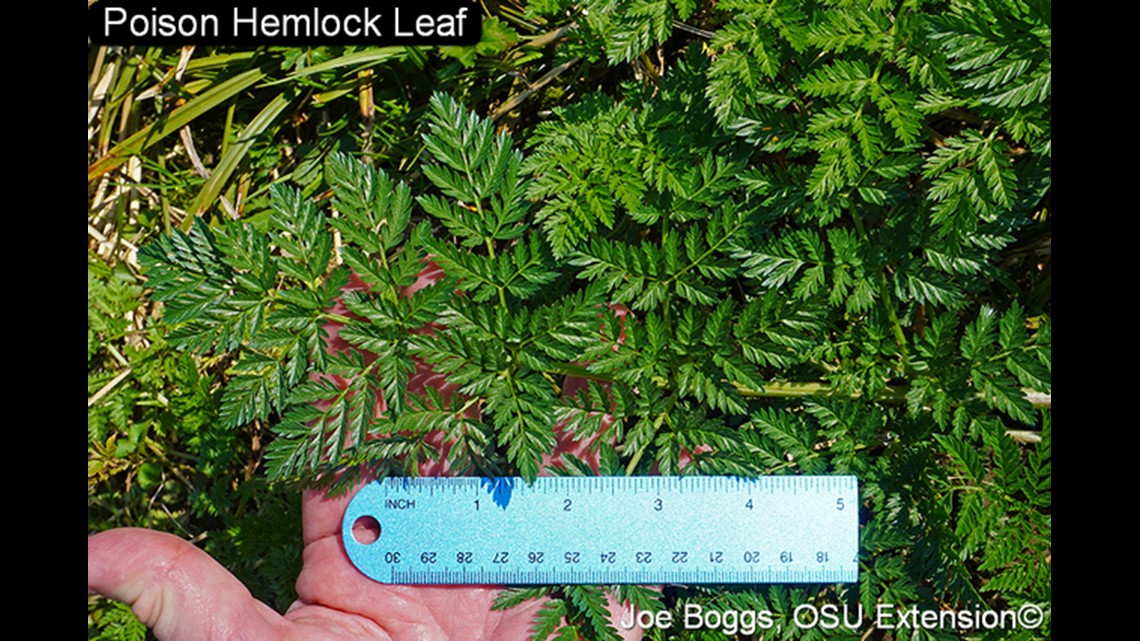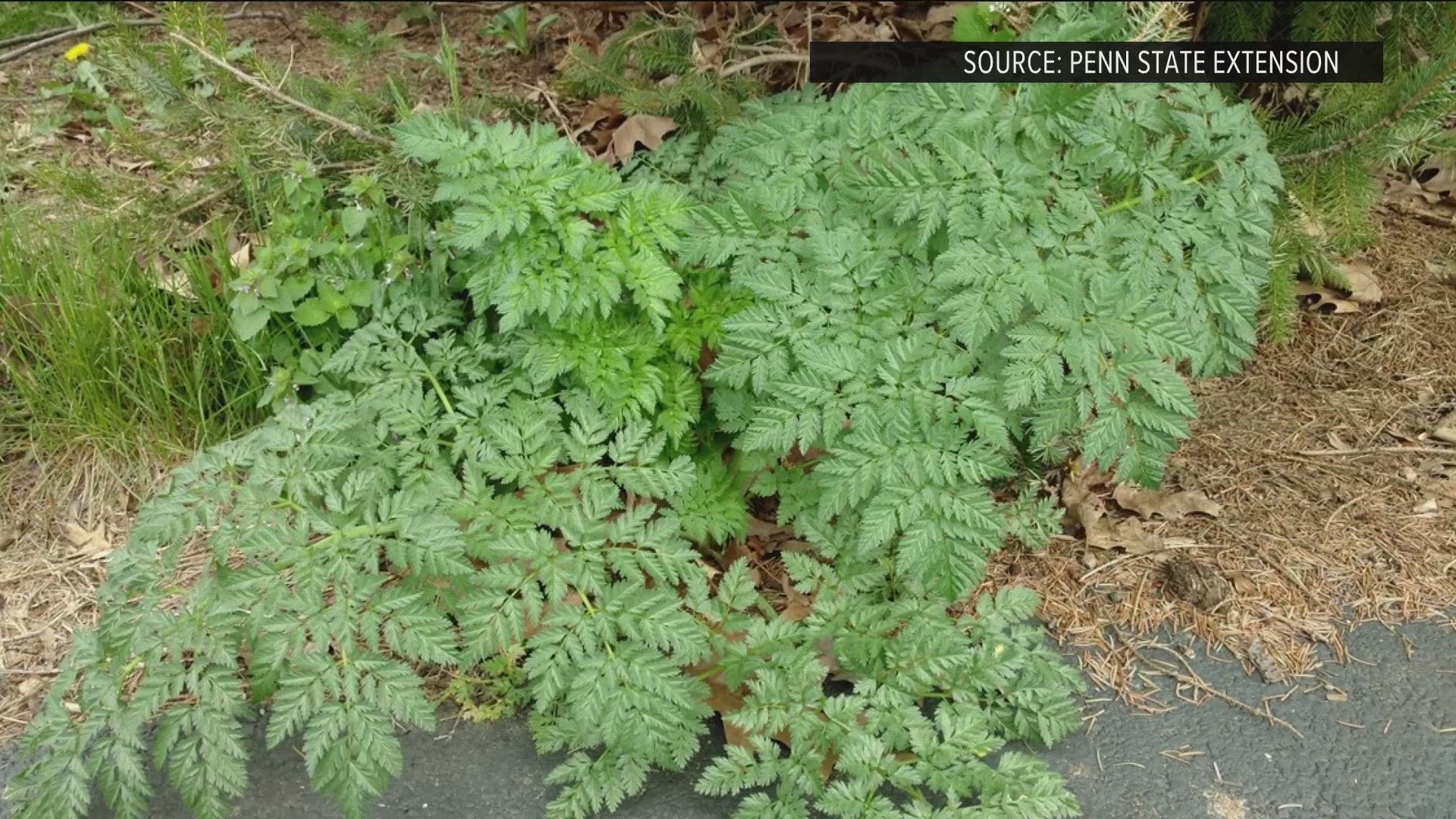TOLEDO, Ohio — Poison hemlock is one of the deadliest plants found in North America.
According to the Cleveland Clinic, “poison hemlock (Conium maculatum) is a highly toxic plant that’s a member of the carrot family. It’s commonly mistaken for wild carrot, wild parsnip or wild parsley. This can lead you to accidentally eat it (ingestion). Every part of the hemlock plant is poisonous, including the seeds, root, stem, leaves and fruit. It can be fatal if ingested. Ancient Greeks used poison hemlock to execute criminals or political prisoners. The most famous example of this is the execution of Socrates.”
The toxins of the plant are found in the sap of the poison hemlock. According to Joe Boggs, assistant professor at Ohio State University Extension, all parts of the plant are poisonous.
"The leaves, stems, seeds, and roots [are toxic]," he said. "However the toxins must be ingested or enter our body through our eyes, nasal passages, or cuts in our skin to induce poisoning.”
This can be done through accidental exposure such as bailing hay or direct contact while cutting brush in open areas such as drainage ditches and along fence lines. The toxins, which can be fatal if ingested, do not cause skin rashes or blistering similar to poison ivy or poison oak.


"Poison hemlock is a prolific seed producer which has resulted in this invasive species to rapidly spread, including across great parts of Ohio," Boggs said. "Research has shown that seed production ranges from 1,700 to as high as 39,000 seeds per plant."
Poison hemlock is now found throughout Ohio. It’s not hard to identify and spot at this time of the year because the mature plants can be large and are in full bloom.
“We do have poison hemlock in northwest Ohio although it may not yet be as heavy or widespread as in the southern part of Ohio," said Amy Stone, extension educator at OSU Extension of Lucas County. "It’s also found in neighboring Michigan. So, it’s already spread into northwest Ohio.”
Poison hemlock has a biennial life cycle. This means that the first year of growth is spent in the vegetative stage as a low-growing basal rosette where a deep root system is established. I
n the second year, plants flourish to produce tall multi-branched stems topped with umbrella-like flowers. Mature poison hemlock plants can tower to has high as 10 feet tall.
Poison hemlock has small, white flowers with petals that grow in an umbrella-shaped cluster. Each flower develops into a green, ribbed fruit that contains seeds.
Poison hemlock stems are hairless, light-green to bluish-green, and covered with obvious purplish blotches. The delicate leaves of the plant look like parsley.
After poison hemlock flowers and matures, it turns a grayish-brown and produces seeds.




WHAT TO DO:
- Mowing is a possible mitigation effort of poison hemlock before it blooms or during early stages of growth. However, once poison hemlock reaches the flowering mature state, mowing will only act to scatter seeds and promote future growth. Those mowing should be highly cautious to wear proper PPE to ensure safety.
- Hand-pulling poison hemlock plants just after they bolt can be effective on small infestations. However, it’s strongly recommended that hands are protected with gloves, arms protected with long sleeves, and eyes protected with safety goggles. Plants should not be burned but disposed of using a method with limited exposure to animals and people.
- Herbicides may be the safest option this non-native weed is susceptible to a wide range of selective and non-selective herbicides.
According to the Cleveland Clinic, “Hemlock poisoning can occur after ingesting even small amounts of poison hemlock. The plant contains several toxic compounds called alkaloids. These alkaloids slowly poison your neuromuscular functions, which send messages from your nerves to your muscle fibers. This poisoning can cause your breathing muscles to fail. When your breathing muscles fail, you can go into respiratory failure and die. Hemlock poisoning can also affect your gastrointestinal tract, nervous system and cardiovascular system.”
Poison hemlock grows now in every region of the United States. It is most commonly found along drainage ditches, roadsides, marshes, meadows and other open areas.
If you have eaten this poisonous plant, call 911 or go to your nearest emergency room. Hemlock poisoning can cause severe symptoms within 15 minutes of ingestion.
A full link to Joe Boggs work and warning of poison hemlock can be found HERE
RELATED VIDEO

